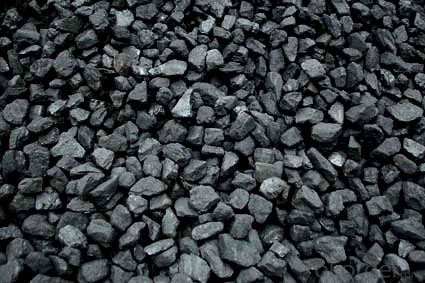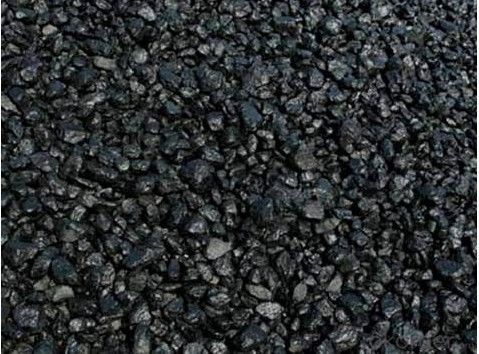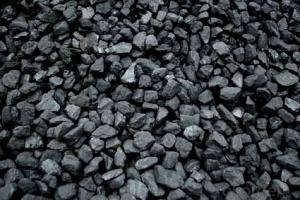Coal Based Pickling Granular Activated Carbon 12x40 Mesh
- Loading Port:
- Tianjin
- Payment Terms:
- TT OR LC
- Min Order Qty:
- 1000 m.t.
- Supply Capability:
- 5000 m.t./month
OKorder Service Pledge
OKorder Financial Service
You Might Also Like
1.Structure of Anthracite Description
Anthracite is made from Shanxi,the coal capital of the word .The quality is very high due to its unique resource .It has been exported to most of the world ,especially to Japan and Korea,as well as mid east.
It is commonly used in drinking water ,food industry ,chemical /dyeing industry ,sea/salt water filtration ,petro-chemical industry ,pulp/paper industry ,sauna,spa,pool,boiler ,etc.
Advantages:
1. Longer Filter Runs2. Faster Filtration3. Long Lifetime4. Good Separation Characteristics5. Savings water and power in washing6.Removes more iron and manganese salts tration ,petrochemical industry ,pulp /paper industry ,sauna,spa,pool,boiler,etc.
2. Main Features of Anthracite
Fixed Carbon: 78 %
Ash: 18 %
Volatile Matter: 4 %
Sulphur: 1.0 %
Moisture: 11 %
Gross Calorific Value: 6450 Kcal
Size: 0 mm - 19 mm: 90%
3. The Images of Anthracite


4. The Specification of Anthracite
1. Fixed carbon: 90%min
2.Uniform particles
3.Good separation characteristics
4. Long life
5. Widely used
6.activated anthracite:
7.Certificate: ISO9001, ISO9002, NSF
8.Usage: for water and air purification, etc.
5.FAQ of Anthracite
1). Q: Are you a factory or trading company?
A: We are a factory.
2). Q: Where is your factory located? How can I visit there?
A: Our factory is located in ShanXi, HeNan, China. You are warmly welcomed to visit us!
3). Q: How can I get some samples?
A: Please connect me for samples
4). Q: Can the price be cheaper?
A: Of course, you will be offered a good discount for big amount.
- Q: Will long-term use of carbon alloy chopsticks cause cancer?
- Do chopsticks also cause cancer? Experts say, should not use too long, 3 to 6 months that change, pay attention to chopsticks material selection, use and maintenance. Have you noticed how often the chopsticks are changed at home? Recently, a news about the need for regular replacement of chopsticks, attracted the attention of Internet users. According to reports, hidden in the small groove in the chopsticks bacteria, may cause dysentery, gastroenteritis and other diseases, it is recommended that the public, chopsticks should be replaced at regular intervals of 3~6 months. This makes many people surprised, "used so many years chopsticks, do not know!"." Yesterday morning, in the south near Xi'an Renrenle supermarket shopping public Ms. Hao said. Subsequently, a random survey of 20 members of the public, of which 4 people said that in the six months of internal moving or kitchen renovation and replaced chopsticks. While the other 16 citizens, the number of chopsticks used in the home was 1~3 years. Especially for families with old people, chopsticks are updated more slowly. "The old man can't bear to throw it. He can't help it. Every time he comes to the restaurant, the chopsticks are not enough."." Liu said the public. In this regard, yesterday, director of the Xi'an Municipal Hospital of traditional Chinese Medicine Department of Gastroenterology physician Huang Yahui said, if the wood and bamboo chopsticks used for a long time, it is easy to breed bacteria sawdust loose.
- Q: What are carbon credits?
- Carbon credits are a market-based mechanism designed to reduce greenhouse gas emissions and combat climate change. They represent a unit of measurement that quantifies the reduction, removal, or avoidance of one metric ton of carbon dioxide (or its equivalent) from being released into the atmosphere. The concept behind carbon credits is based on the idea that certain activities or projects can help offset the emissions produced by other activities. For instance, renewable energy projects, such as wind farms or solar power plants, can generate carbon credits by displacing the need for fossil fuel-based electricity generation. Similarly, projects that focus on reforestation or afforestation can absorb carbon dioxide from the atmosphere, creating credits. These carbon credits can be bought and sold in the carbon market, allowing companies or individuals to compensate for their own emissions by purchasing credits from projects that have successfully reduced or removed carbon dioxide from the atmosphere. By doing so, they support environmentally friendly initiatives and contribute to the overall reduction of greenhouse gases. The carbon credit system operates on the principle of creating financial incentives for emission reduction activities. It encourages businesses to invest in cleaner technologies and practices by providing a monetary value to the reduction of carbon emissions. In turn, this helps drive the transition to a low-carbon economy and promotes sustainable development. Carbon credits play a crucial role in international efforts to address climate change. They are often used as a compliance mechanism for countries or companies to achieve their emission reduction targets, as outlined in international agreements like the Kyoto Protocol or the Paris Agreement. Additionally, they contribute to the overall goal of limiting global temperature rise by incentivizing emission reductions beyond regulatory requirements. While carbon credits have been criticized for potentially allowing companies to continue polluting by simply purchasing credits, they remain an important tool in the fight against climate change. They provide economic benefits to sustainable projects and encourage the transition to cleaner technologies, ultimately helping to mitigate the environmental impact of human activities.
- Q: How does carbon impact the growth and development of plants?
- Carbon is essential for the growth and development of plants as it is a key component of photosynthesis. Through this process, plants convert carbon dioxide into glucose, their main source of energy. Carbon also plays a crucial role in forming the structural molecules of plants, such as cellulose, lignin, and proteins. Overall, carbon is vital for the overall health, productivity, and survival of plants.
- Q: How does carbon pricing work?
- Carbon pricing is a market-based approach that aims to reduce greenhouse gas emissions by putting a price on carbon emissions. It works by putting a financial cost on the release of carbon dioxide and other greenhouse gases into the atmosphere, which are major contributors to climate change. There are primarily two types of carbon pricing mechanisms: carbon taxes and cap-and-trade systems. Under a carbon tax, a fixed price per ton of carbon emissions is set, and emitters are required to pay this tax based on their emissions. The tax can be levied at various stages of the supply chain, such as at the point of extraction, production, or consumption. The idea behind a carbon tax is to create an economic disincentive for emitting carbon and encourage industries and individuals to reduce their emissions. Cap-and-trade systems, on the other hand, set a limit or cap on the total amount of carbon emissions allowed within a specific jurisdiction. This cap is divided into allowances, which represent the right to emit a certain amount of carbon. These allowances are either allocated or auctioned off to emitters in the form of permits. Emitters can then trade these permits amongst themselves in a market. If an emitter exceeds their allocated allowances, they must purchase additional permits from others who have surplus allowances. This creates a market-based incentive for reducing emissions as those who can reduce their emissions more cost-effectively can sell their extra allowances to those who are unable to. Both carbon taxes and cap-and-trade systems aim to internalize the cost of carbon emissions into the economy, making it more expensive to pollute and incentivizing the adoption of cleaner technologies and practices. By putting a price on carbon, these mechanisms provide economic signals that encourage businesses, industries, and individuals to invest in low-carbon alternatives, energy efficiency, and innovation. They also provide a revenue stream for governments, which can be used to fund climate change mitigation and adaptation efforts, renewable energy projects, or to reduce other taxes. Overall, carbon pricing mechanisms are designed to create economic incentives for reducing greenhouse gas emissions, promoting the transition to a low-carbon economy, and mitigating climate change. While they may not be a silver bullet solution, they are widely recognized as one of the most effective tools to drive emission reductions and combat climate change.
- Q: What are the impacts of carbon emissions on natural disasters?
- Carbon emissions contribute to the intensification and frequency of natural disasters. The release of greenhouse gases, such as carbon dioxide, traps heat in the atmosphere, leading to global warming and climate change. This warmer climate alters weather patterns, resulting in more frequent and severe events like hurricanes, droughts, wildfires, and floods. Additionally, the melting of polar ice caps due to increased temperatures raises sea levels, making coastal regions more vulnerable to storm surges and causing further devastation. Overall, carbon emissions exacerbate the impact of natural disasters, posing significant threats to human lives, ecosystems, and economies.
- Q: What's a carbon cloth to do as a fish pole?
- This is difficult, usually with a lathe like tool, by heating in the brush, layer by layer roll up, and finally cut off paint, baking
- Q: Joint carbide gas incident
- After a lapse of 25 years, a India District Court on 1984 Bhopal gas leak to be long in coming judgment, Union Carbide (India) Co., Ltd. 7 India nationals day was held for negligence causing death, they will face up to two years in prison. On the same day, hundreds of survivors, family members and environmentalists gathered around the courthouse to protest the court's decision that the perpetrators of the worst industrial disaster in twentieth Century were too light and too late. In 1969, Union Carbine Co established a Union Carbide in central India state of Bhopal Beijiao city (India) Co. Ltd., specializing in the production of aldicarb, carbaryl pesticide drops. The chemicals used in these products is called a methyl isocyanate poisonous gas. The early morning of December 3, 1984, this factory storage explosive liquid methyl isocyanate the steel tank, 45 tons of poison gas leak quickly, directly killed more than 1.5 people, allegedly have caused more than 550 thousand people died and chemical poisoning related lung cancer, renal failure and liver disease.
- Q: What are the consequences of increased carbon emissions on cultural heritage sites?
- The impact of increased carbon emissions on cultural heritage sites can be significant. One immediate and visible effect is the degradation of physical structures and artifacts. Carbon emissions contribute to air pollution, leading to the formation of acid rain. This acid rain contains high levels of sulfuric and nitric acids, which corrode and erode materials like stone, metal, and paint. Consequently, historic buildings, monuments, and sculptures can deteriorate and lose their original color. Moreover, carbon emissions also contribute to climate change, resulting in more frequent and severe weather events such as hurricanes, floods, and wildfires. These extreme weather events directly threaten cultural heritage sites, causing physical damage and even destruction. For instance, rising sea levels due to climate change erode coastal archaeological sites, leading to the loss of valuable historical artifacts and structures. Additionally, increased carbon emissions pose a threat to the intangible aspects of cultural heritage. Climate change disrupts ecosystems and biodiversity, impacting the natural surroundings of cultural sites. As a result, traditional knowledge, practices, and cultural landscapes linked to these sites can be lost. Changing environmental conditions may force indigenous communities to lose their ancestral lands and sacred sites. Furthermore, cultural heritage sites heavily rely on tourism for income and conservation funding. However, increased carbon emissions contribute to global warming, which alters travel patterns and preferences. Consequently, there may be a decline in tourist visits to these sites, impacting local economies and hindering conservation efforts. In conclusion, the consequences of increased carbon emissions on cultural heritage sites are diverse and far-reaching. It is essential to address and mitigate these emissions through sustainable practices and policies to safeguard and preserve our shared cultural heritage for future generations.
- Q: How does carbon impact the productivity of marine ecosystems?
- Carbon impacts the productivity of marine ecosystems by influencing the growth and survival of primary producers, such as phytoplankton, which are the foundation of these ecosystems. Increased carbon dioxide levels can stimulate phytoplankton growth in some cases, but excessive amounts can lead to detrimental effects like ocean acidification. This can disrupt the delicate balance of marine ecosystems, affecting the availability of nutrients, food chains, and overall productivity.
- Q: Rod box material, there is a kind of material called carbon fiber, who knows this material is good?
- Carbon fiber has many excellent properties, carbon fiber axial strength and high modulus, low density, high performance, no creep, non oxidation under the environment of high temperature resistance, good fatigue resistance, between heat and electrical conductivity between the metal and non metal, smaller thermal expansion coefficient and anisotropy, good corrosion resistance, X Radiability good. Good conductivity, thermal conductivity, good electromagnetic shielding, etc..
Send your message to us
Coal Based Pickling Granular Activated Carbon 12x40 Mesh
- Loading Port:
- Tianjin
- Payment Terms:
- TT OR LC
- Min Order Qty:
- 1000 m.t.
- Supply Capability:
- 5000 m.t./month
OKorder Service Pledge
OKorder Financial Service
Similar products
Hot products
Hot Searches
Related keywords






















